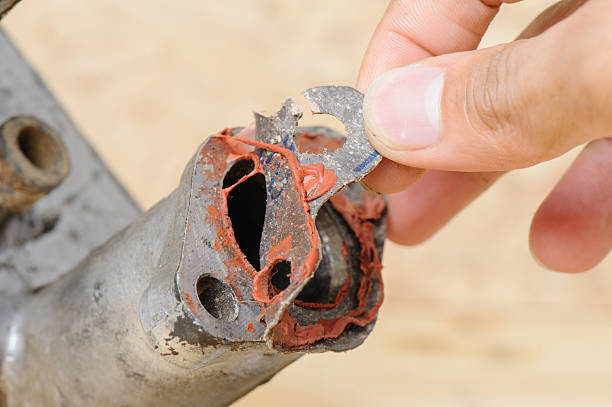Can I Weld Near an Exhaust Gasket?
Welding near an exhaust gasket is a common concern for DIYers and mechanics. This article will explore a question that often comes up: Can I weld around an exhaust gasket? So let’s break it down in a way that’s easy to understand.
What’s an Exhaust Gasket Anyway?

First, let’s take a quick look at what an exhaust gasket is. This little piece is super important in your vehicle’s exhaust system. It sits between the exhaust manifold and the exhaust pipe, creating a seal that keeps harmful gases from leaking into your engine bay. Here are some essential details:
- Material: Exhaust gaskets are usually made from metal or a mix of metal and softer materials to handle high temperatures and pressures.
- Function: They help prevent exhaust leaks, which can affect your engine’s performance and even harm the environment.
So, Can You Weld Near It?
Now, onto the big question: Can you weld near an exhaust gasket? The short answer is: it’s not a great idea. Here’s why:

Heat Sensitivity
- Thermal Damage: Welding creates a lot of heat, which can damage the gasket. If the gasket gets too hot, it might not seal properly anymore.
- Material Changes: High temperatures can make the gasket lose its flexibility, leading to leaks.
Safety Hazards
- Toxic Fumes: Welding near an exhaust system can release harmful fumes, which isn’t good for anyone nearby.
- Fire Risk: The heat from welding can ignite flammable materials, including the gasket or anything else close by.
Performance Issues
Leakage: If the gasket gets damaged, you could end up with exhaust leaks, which can hurt your engine’s efficiency and fuel economy.
Environmental Impact: Leaks can also let out harmful emissions.
If You Must Weld Near an Exhaust Gasket
Sometimes, you might find yourself in a situation where welding near the gasket is unavoidable. If that’s the case, here are some steps and precautions to keep in mind:

Assess the Situation
Leakage: If the gasket gets damaged, you could end up with exhaust leaks, which can hurt your engine’s efficiency and fuel economy.
Environmental Impact: Leaks can also let out harmful emissions.
Allow for Proper Cooling After Welding
- Cooling Time: After welding, ensure the area has cooled sufficiently to avoid material deformation and ensure effective sealing.
Choose a Low Heat Input Welding Method
- Welding Technology: Opt for a low heat input welding method, such as the Magmatec Dex2 350LD welder, to minimize heat generation and reduce the risk of deformation.
Continuously Monitor Temperatures
- Temperature Monitoring: Use a thermometer to monitor temperatures near the gasket during welding, ensuring they remain within a safe range.
Adjust Equipment Settings
- Welding Technology: Opt for a low heat input welding method, such as the Magmatec Dex2 350LD welder, to minimize heat generation and reduce the risk of deformation.
Be Prepared for Accidents
- Emergency Plan: Develop an emergency plan to respond quickly to any issues. Train all personnel in emergency procedures.
Inspect and Replace Affected Gaskets
- Post-Welding Inspection: After cooling, inspect removed gaskets and seals. Replace any damaged components to maintain sealing integrity and proper exhaust system operation.
Conclusion
While it is technically possible to weld near an exhaust gasket, it is not advisable due to the associated risks. Always prioritize the integrity of your vehicle’s exhaust system. Keeping your vehicle safe and efficient is not just about performance; it’s about being responsible and caring for safety and the environment.



